Open-type researchers A01: Exploration (the former period)
Shuji Akiyama
| Research Center of Integrative Molecular Systems (CIMoS), Institute for Molecular Science (IMS), National Institutes of Natural Sciences (NINS), Professor, Ph. D. |
 |
|
| Role: | A01 Open-type Researcher | |
|---|---|---|
| Title: | Complementary use of small-angle X-ray scattering and high-speed AFM for tracking assembly/disassembly dynamics of molecular systems. | |
| Purpose: | Flexibility and adaptability are important characteristics of life, originating as consequences of dynamic and cooperative behaviors of bio-macromolecules in cells. Thus, it is of particular importance in the fields of basic biology to measure their assembly / disassembly processes, that is, to identify time evolution of the structure and stoichiometry of macromolecular complexes in solution. In this research project, we will use small-angle x-ray scattering and high-speed AFM complementary as tools to track and visualize the ordered assembly/ disassembly in protein clock systems. | |
Ryo Akiyama
| Department of Chemistry, Kyushu University Associate Professor, Ph. D. |
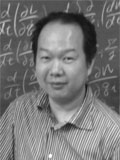 |
|
| Role: | A01 Open-type Researcher | |
|---|---|---|
| Title: | Dynamic ordering and regulation of effective attraction between acidic proteins mediated by multivalent cations | |
| Purpose: | Motion of cell, such as amoeboid movement, is driven by anchoring and association of actin-like proteins. We will understand those dynamical ordering structures on the basis of statistical physics. One of the purposes in this subject is an elucidation of actin treadmilling and of the regulation mechanism, because it is important process in the cell movement. Here, the treadmilling means directional motion of actin-filament. In the treadmilling process, an end of protein filament grows by the association of monomer proteins and the dissociation causes the shrink at the other end of filament. Consequently, the directional motion is observed. Experiments have shown that multivalent cations mediate effective attraction between acidic proteins. We think that actin-actin attraction arises from this interaction and the strength is regulated by the ATP-hydrolysis. The other purpose is a survey of the application of this idea. There are some attractive patches, such as negatively charged oxygen atoms, on the acidic proteins. The dynamical ordering structure of proteins can depend on the arrangement of the patches. We will study the dependence based on the simulation studies with above idea. | |
Masahiko Annaka
| Department of Chemistry, Graduate School of Science Kyushu University Professor, D. Sc. |
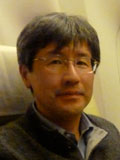 |
|
| Role: | A01 Open-type Researcher | |
|---|---|---|
| Title: | Dynamic ordering of supramolecular softmatter systems | |
| Purpose: | The weak interactions to support the formation of ordered structure and assembly of molecules are characterized by a thermal energy comparable to room temperature. Therefore ordered structures of biomolecules are formed and annihilated with a characteristic time, and have complex time and special hierarchy. The understanding of the physical principles governing formation of ordered structure of polymer, phase transitions between ordered structures, and memorization of the structure lead to the construction of physicochemical principle of life at molecular level. In this study, we focus on the elicidation of (i) the mechanism of the phase transitions of ordered structures of amphiphilic polymer induced by change in the external environment such as temperature, shear flow and addition of small amount of the guest component, and (ii) the kinetic pathway form non-equilibrium state to equilibrium state. Furthermore, we will attempt to provide physical insights into the physicochemical principle of biological functions by investigating the order-order and order-disorder structural transition of biopolymer- amphiphilic polymer complex. | |
Teppei Ikeya
| Graduate School of Science, Tokyo Metropolitan University Assistant Professor, Ph. D. |
 |
|
| Role: | A01 Open-type Researcher | |
|---|---|---|
| Title: | Dynamics and stability of protein structures obtained by an organized system in living cells | |
| Purpose: | In order to understand the dynamic ordering of biomacromolecules under nearly natural conditions, it is necessary to directly observe those three dimensional (3D) structures and dynamics at work in living cells. Most of the past analyses of protein structure and dynamics, however, were performed in dilute solutions with purified samples, which were far from living systems conducting the dynamical ordering and functions. We developed several methods to analyze proteins at atomic resolution in living cells using an approach named in-cell NMR, including the first protein 3D structure determination in cells. Extending these technologies, it should be possible to elucidate the relationships between protein function and dynamical ordering in the cell. In this research project, we will attempt to measure the interaction of a target protein with other proteins inside the cells as well as its molecular dynamics and structure, in order to reveal the mechanism by which the molecular functions and structures are invoked in these complex systems. | |
Koichi Iwata
| Department of Chemistry Gakushuin University Professor, Ph. D. |
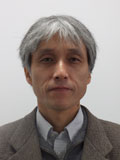 |
|
| Role: | A01 Open-type Researcher | |
|---|---|---|
| Title: | Experimental examination of domain structure in artificial lipid bilayer membranes | |
| Purpose: | Biomembranes form various cell components including plasma membranes and mitochondria. A number of biochemical reactions proceed inside or on the biomembranes by using membrane proteins as catalysts. The structure of the biomembranes and its fluctuation affect the biochemical reactions in a crucial manner. Although there is a long history of the studies of the biomembranes, their molecular structure and the dynamical behavior are still to be clarified. A number of researchers presume the presence of the lipid raft. The lipid raft model implies that there are structure similar to the gel phase membrane and structure similar to the liquid crystal phase membrane coexisting in the lipid bilayer membrane. Or, there will be a domain structure in the lipid bilayer membrane. The aim of this study is to examine the presence of the domain structure in the lipid bilayer membrane by using advanced spectroscopic methods. | |
Takayuki Uchihashi
| Department of Physics, College of Science and Engineering, Kanazawa University, Professor, Ph. D. |
 |
|
| Role: | A01 Open-type Researcher | |
|---|---|---|
| Title: | Experimental examination of domain structure in artificial lipid bilayer membranes | |
| Purpose: | Many proteins display their functions and regulations through dynamics of multimolecular complex such as assembly and disassembly. Therefore, real-time observation of spatiotemporal dynamics of complex formation is essential to deeply understand the molecular mechanisms of proteins. We have been improving the imaging speed of atomic force microscopy (AFM) over the years and recently established the high-speed AFM capable of imaging single protein dynamics with sub-100ms temporal resolution and low-invasiveness. In this research project, we will develop basic techniques which enable visualization of dynamics of multimolecular complex with high-speed AFM and then apply it to Kai proteins consisting of the Cyanobacterial circadian pacemaker. The final goal of the project is an understanding molecular mechanism of robust circadian rhythmicity by directly observing the dynamic three Kai proteins (KaiA, KaiB, KaiC) and also monomer exchange process in the KaiC hexamer. | |
Toshikazu Takata
| Department of Organic and Polymeric Materials, Tokyo Institute of Technology Professor, Ph. D. |
 |
|
| Role: | A01 Open-type Researcher | |
|---|---|---|
| Title: | Synthesis of Topology-Changeable Supramolecular Polymers and Their Organization and Function Control | |
| Purpose: | Polymer is well known to change its property depending upon the primary structure such as linear, branched, and cyclic ones. However, no polymer is reported so far that can undergo the mutual conversion among these structures as a single molecule. We have studied on the construction and structure control of various supramolecular systems including polymer system utilizing rotaxane linkage. We will create unique systems capable of freely changing its primary structure (topology) by utilizing dynamic nature of rotaxane linkages introduced at linking points of plural polymer chains in this work. For example, polymer system, which changes its topology from branched (or star-shaped) structure to linear (or block) one by stretching, can be regarded as an artificial muscle system. Namely, we will develop a dynamic ordering polymer system where small roaxane switch changes topology of the polymer chain and eventually switches not only polymer surface but also bulk function and property. The present research will accomplish the construction of novel dynamic ordering system which provides the stimuli-responsive device and material via deep understanding of biomolecular systems. | |
Masanori Tachikawa
| Graduate School of NanoBioScience, Yokohama City University, Professor, Ph. D. |
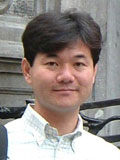 |
|
| Role: | A01 Open-type Researcher | |
|---|---|---|
| Title: | Development of quantum simulation methods for exploring self-assembly mechanism of supra and biomolecular systems | |
| Purpose: | In our research project, we will develop quantum simulation methods for exploring self-assembly mechanism of supra and biomolecular systems with high precision. First, we will implement the solvent effect and efficient sampling method, and extend our method to nuclear quantum dynamics. Based on these methods, second, we will employ the simulation for supra and biomolecular systems. The simulations in various solvents will be performed for the hexameric nanocubes of gear-shaped amphiphiles. The simulations of protein with law barrier hydrogen bonding will be carried out by our multi-component density functional theory, which can take account of quantum fluctuations of light mass particles. | |
Yoshikazu Tanaka
| Graduate School of Life Sciences, Hokkaido University Associate Professor, Ph. D. |
 |
|
| Role: | A01 Open-type Researcher | |
|---|---|---|
| Title: | Elucidation of dynamic assembling mechanism of pore forming toxin | |
| Purpose: | Pore-forming toxins (PFTs) are important proteins universally used in a wide range of organisms to attack target cells. Eukaryotes use PFTs as immune proteins, whereas pathogenic bacteria secrete them to kill blood cells. PFTs are expressed as water-soluble monomeric proteins, which assemble on the target cell membranes to form ring-shaped nonlytic oligomeric intermediate so-called pre-pores. After forming the pre-pore, a marked structural change occurs to form membrane-inserted pores. In this research project, we will elucidate the dynamic mode of action of PFTs, in which soluble proteins assemble to membrane protein with dramatic structure change, by means of X-ray crystallography, electron microscopic analysis, spectroscopic analysis and so on. The knowledge about the machinery of drastic structural change of protein will enable to design movement of protein molecules and apply it to the development of nano-devices. | |
Akira Naito
| Graduate School of Engineering, Yokohama National University Professor, Ph. D. |
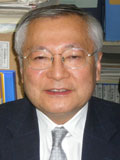 |
|
| Role: | A01 Open-type Researcher | |
|---|---|---|
| Title: | Molecular mechanism of amyloid fibril formation and inhibition of human calcitonin. | |
| Purpose: | Human calcitonin (hCT) is known as an amyloid fibril forming protein which is related to Alzheimer’s disease. A variety of biophysical methods such as solid state NMR, TEM, and MD simulation are used to determine the fibril structure and to investigate the fibrillation mechanism in the atomic resolution. In this research project, first, we synthesize 13C, 15N doubly labeled hCT and accurate interatomic distances are measured to determine the three dimensional structure of the fibril. Second, we evaluate the specific interactions between the side chains of the amino acids in the hCT and its mutants using molecular dynamics simulation based on the structure determined by solid state NMR. Using this structural information, we design the hCT mutant which shows the inhibition of fibril formation without decrease of the function. In addition, we determine the structure of the spherical intermediates and the dynamic changes from intermediates to proto fibrils. Further, we reveal the fibril formation mechanism under the presence of lipid bilayers to mimic the cell environments. | |
Hiroyoshi Matsumura
| Department of Life Sciences Ritsumeikan University Professor, Ph. D. |
 |
|
| Role: | A01 Open-type Researcher | |
|---|---|---|
| Title: | Structural and functional analysis of the cell-division proteins | |
| Purpose: | In this research project, we focus on the fundamental mechanism of how the cell division proteins coordinately act to accomplish membrane constriction, and we would thereby build a molecular model of bacterial cell division. So far, I have elucidated structure-function relationships of proteins and nucleic acids by x-ray or neutron crystallographic and small-angle x-ray scattering methods, and also developed several methods of protein crystallization. However, I realize that the functions of the individual molecules could not completely explain their biological phenomena. I now believe that the “dynamics” of such molecules in solution plays important roles in biological systems. In this study, crystallographic studies are combined with several biophysical methods to bridge the gap between mico- and macro- biological systems. I therefore would ask to collaborate with the researchers in this research field. |
|
Nobuaki Matsumori
| Department of Chemistry, Faculty of Sciences, Kyushu University Professor, Ph. D. |
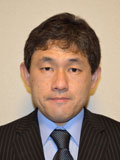 |
|
| Role: | A01 Open-type Researcher | |
|---|---|---|
| Title: | Exploration of dynamical ordering of lipid molecules in lipid rafts | |
| Purpose: | Biological membranes have ordered microdomains called lipid rafts, which are shown to play multiple physiological functions in cellular processes. However, the manner in which raft-forming lipids self-assemble to form a nanometer-scale organization on biological membranes is still unknown, largely because of the rapid association and dissociation equilibrium of lipid molecules in rafts. We have been examining dynamics of lipid molecules and molecular interactions in lipid rafts with combined use of chemical synthesis of labeled lipids and NMR measurements. In this research, in order to gain further information of lipid dynamics with faster time resolution and higher sensitivity, we will introduce fluorescent life time measurements, 2D IR, and fluorescent microscopy, in addition to NMR techniques. This integrated analytical system will be applied to complicated membranes including biological membranes, which is expected to reveal the molecular basis and dynamic ordering in raft formation. | |
Masafumi Yohda
| Tokyo University of Agriculture and Technology, Institute of Engineering Professor, Ph. D. |
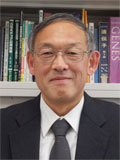 |
|
| Role: | A01 Open-type Researcher | |
|---|---|---|
| Title: | Study on the molecular mechanism for dynamical ordering and function of sHsp | |
| Purpose: | Small heat shock proteins (sHsps) belong to the members of the ubiquitous molecular chaperones. Their common feature is the alpha-crystallin domain, which is named after the alpha-crystallin of the vertebrate eye lens. Under physiological temperatures, sHsps exist as large oligomeric structures and do not interact with denatured proteins. When sHsps are exposed to elevated temperatures, the large oligomeric structure dissociates into small oligomers, and exhibit molecular chaperone function. As the association and dissociation of sHsp is reversible, it is ideal for biophysical study. Moreover the structural transition of sHsp is directly linked its physiological function. In this study, I will reveal the mechanism for oligomer assembly, dissociation and function of sHsp. Especially, I will focus on the process in the cell, where various biological molecules co-exist in the crowded condition. This study will contribute to study on dynamical ordering and function of biomolecules in the cell. | |
